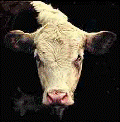Animal Science, Department of

Department of Animal Science: Dissertations, Theses, and Student Research
Date of this Version
2011
Document Type
Dissertation
Abstract
In trial 1, 3 levels of dl-α-tocopheryl acetate (0, 50, 100 IU/kg), and 3 levels of supplemental sodium selenite (SS) (0, 0.25, 0.50 ppm), were added to a corn-soybean meal basal diet to evaluate their effects on egg quality variables, and deposition in egg yolk. Adding 50 IU/kg dl- α-tocopheryl acetate in the diet lowered aged yolk pH. Alpha-tocopherol in yolks increased with increasing vitamin E. As Se level increased in the diet, yolk Se content increased. There was a vitamin E by Se interaction affecting yolk Se content, but the highest level of Se in the yolk achieved when using 0.5 ppm Se from either source with no vitamin E. Trial 2 was conducted to investigate the effects of using organic vs. inorganic Se on egg quality, egg yolk vitelline membrane strength, and glutathione peroxidase activity in the liver and shell gland of hens. Hens were fed a corn-soybean meal basal diet supplemented with 0, 0.2 ppm selenomethionine (SM), 0.2 ppm SS, 0.4 SM, or 0.4 ppm SS. Supplementing SS at 0.2 ppm or SM at 0.4 ppm had the same effect to improve the VMS. In trial 3, hens were fed the same dietary treatments as in the second trial and added to a semi-purified corn starch-soybean meal basal diet. Yolk Se content was higher in all treatments supplemented with Se from either source than the control diet. There was an interaction effect of Se source and level on albumen Se content; albumen Se content increased when SM levels in the diet increased, whereas when SS levels increased in the diet, there was no increase in egg albumen Se content. In summary, our results indicate that vitamin E and Se supplementation from the organic and inorganic sources can be a good practice to increase some of the egg quality parameters, but more research need to be conducted when the basal levels of Se are low.
Advisor: Sheila E. Scheideler


Comments
A DISSERTATION Presented to the Faculty of The Graduate College at the University of Nebraska In Partial Fulfillment of Requirements For the Degree of Doctor of Philosophy, Major: Animal Science, Under the Supervision of Professor Sheila E. Purdum. Lincoln, Nebraska: April, 2011.
Copyright 2011 Alia Ahmed Aljamal